SOUNDSCAPING FOR SUCCESS!
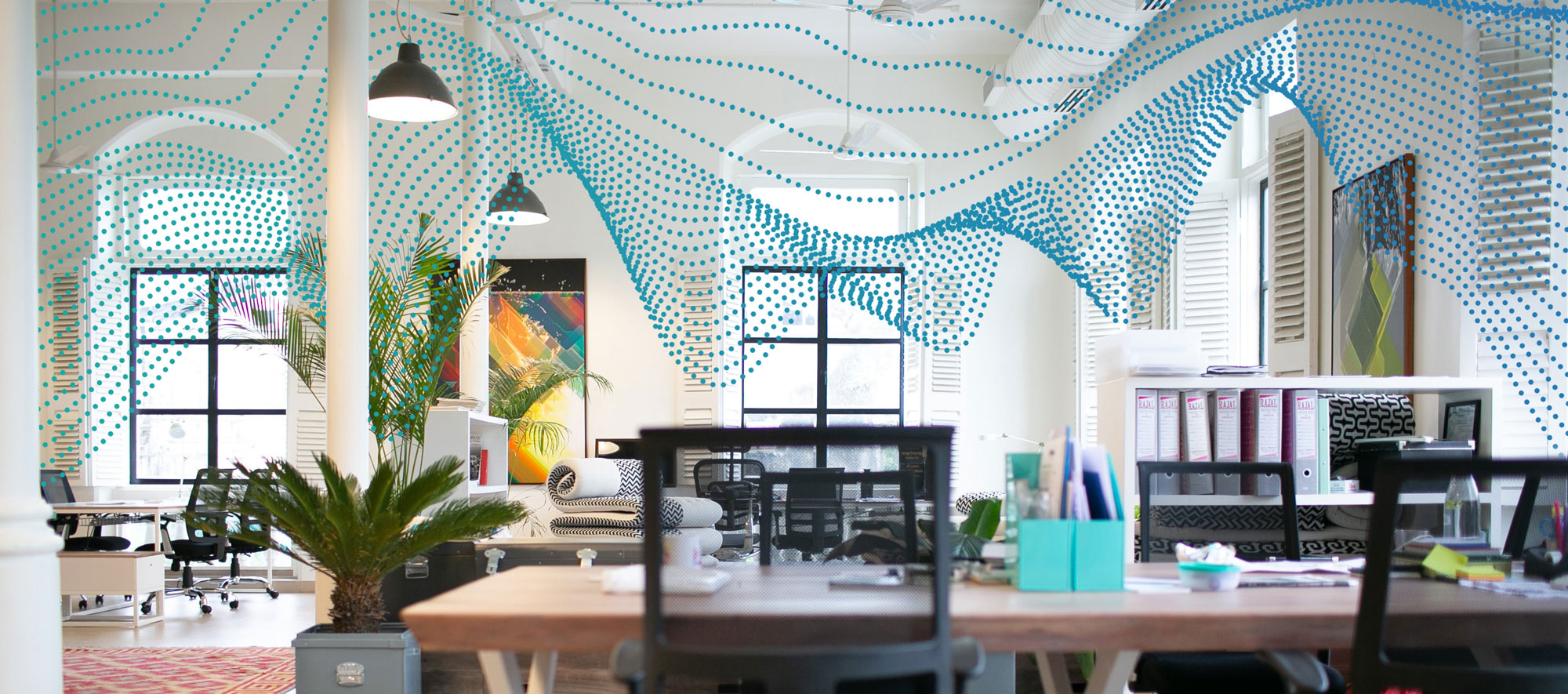

SOUNDSCAPING FOR SUCCESS!
Solutions for a Noisy World
For Episode 46 of The Quiet Mark Podcast, we welcomed a double feature speaking with both Evan Benway, Managing Director at Moodsonic, and Ethan Bourdeau, Sound Concept Lead at IWBI. This marks Ethan’s second time on the Quiet Mark Podcast after featuring in our second ever episode three years ago. This time around, we discussed the ways in which sound masking and soundscaping can help support a human-centric approach to building design, thus creating inclusive spaces that cater to a wide neurodiverse range of occupants.
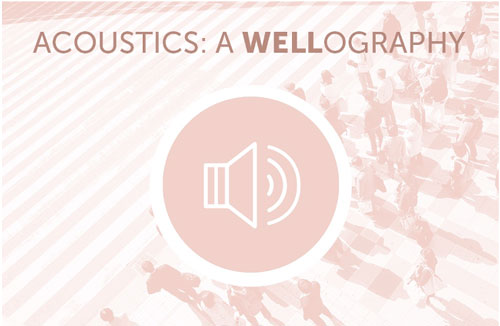
To begin our discussion, we referenced an insightful article Ethan wrote in 2017 entitled “The Top Five Takeaways from the Acoustic’s #WELLography.” In it, he wrote; “have you ever wondered how the diverse soundscapes you experience in your day to day can impact your health and productivity?” The piece provides a comprehensive overview of sound and the built environment, how we are impacted by sounds and “the strategies we can implement to minimise the risks of distracting sounds.”
With our podcast host and CMO, Simon Gosling, Ethan and Evan explore the need for nuance when it comes to sound masking and soundscaping in the built environment. The spectrum between deafening silence and uncomfortably distracting noise is a textured one. As Ethan notes “sometimes adding sound to space can increase comfort. The idea of introducing sound for comfort may sound counterintuitive. Sound masking is most commonly found in office environments as a way of masking speech frequencies and creating a sense of privacy.”
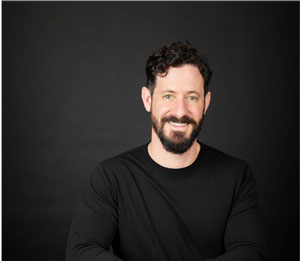
In regards to where Moodsonic fits into this topic, Evan, pictured left, provided us with various insights. “Increasingly when it comes to the built environment, people have identified ‘noise’ as a problem. Often we are referring to speech or outdoor noise and it tends to be the number one thing people complain about in an indoor space. As a result, people assume the solution must be silence and so, in response, we have seen a lot of design for silence. Unfortunately it isn’t that simple. Overall, actual silence isn’t healthy and the impact of the sound field on us is difficult and nuanced.”
In designing its soundscapes, Moodsonic permits for that nuance to exist; “At Moodsonic we use the term soundscaping to describe what we do for a term that has a lot of meaning and generally refers to what we hear around us at a given moment. It is also the process of adding sound to a space for a benefit. We do this in healthcare environments for therapeutic benefits as well as large commercial office spaces”.
“The goal is to create a soundscape that’s beneficial. Oftentimes, speech intelligibility indoors can create issues - we want to hear what someone is saying and we are great at picking up on speech even at a whisper. Now post covid offices see a lower background level which means cognitive performance is being driven down”.
“Generally speaking we are looking at bigger picture questions. For example we are looking to do more with the soundfield of an office than simply blanket an entire area with a single use sound. Neurodiverse office populations should also be considered. Studies have shown that around 30 to 50% of the global population are neurodiverse, this refers to people with ADHD, autism and hyper sensitivities. Of this percentage, 70% are hypersensitive to sound. An extroverted sales person requires a different level of simulation than a neurodivergent introverted coder for example and we can create different soundscapes for this diverse range of workers.”
Moodsonic’s interface is based on sounds of nature, often permitting user customisation. “We drew on biophilia and the sounds of nature. This refers to the hypothesis as to why we tend to respond positively to natural stimuli. Nature isn’t all good, take thunder for example, however our biology connotes an inner coding that identifies whether a space is safe or not. Silence can be uncomfortable because years ago, the absence of bird songs may indicate that a predator is nearby. Essentially, sounds of nature are a great design tool to design for neuro diverse populations and provide therapeutic benefits”.
“At Moodsonic, we work with some of the world’s greatest recordists and libraries of sound. Our technology generates soundscapes and we are now using algorithms meaning we aren’t looping sounds but instead, the scapes evolve over time and can be responsive to user input or sensory information where nuanced information is submitted (for example this place is loud but productive or quiet but distracting) and the soundscape will adapt in turn.” The avoidance of loops is particularly important in creating an organic soundscape. In fact, Evan informed us that Moodcsonic has carried out tests of week-long bird sound samples and many workers picked up on the repetition which can be frustrating (think “oh it's 9:30 on a Monday, I really don’t want to hear that seagull squeak again!).
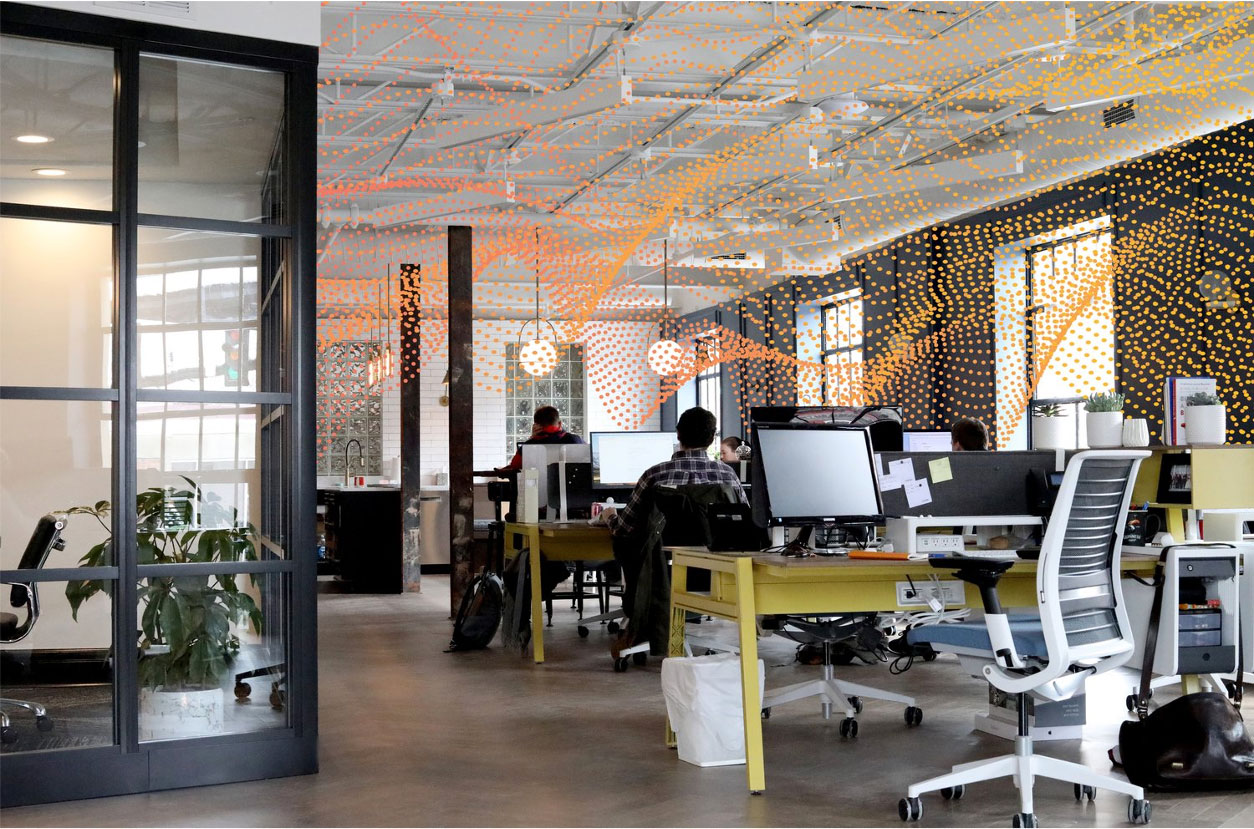
From the Quiet Mark perspective, when our CMO, Simon met with Evan in Moodsonic’s east London offices, they chatted to ocean sounds and Simon reports in the podcast that he felt it helped carry a collaborative conversation. If anything the sound played a huge part in fuelling trust, creativity and collaboration hence why we are so proud/thrilled to take part in this partnership. “I felt the same way. I'm so glad that was your response” Evan expressed. For this reason, Quiet Mark is proud to see our certificate on Moodsonic products.
“At Moodsonic we aren’t designing for an active listening experience” Evan reminds us. “In designing soundscapes for an open plan workspace we think a lot about attention. Post Covid, many organisations embrace hybrid work and collaborative workspaces but individual focused productivity and attention are still important. Moodsonic therefore tries to promote attention via soundscapes that sit in the background of that via providing masking effects or contributing simulation if needed.”
To conclude our conversation, Ethan informed us that “as acoustic consultants, when we talk about sound masking we are talking about pink noise which is an adjusted spectrum which focuses on low frequency and warmer sounds. When we think about soundscape systems, we must focus on respite and stimulation as Moodsonic does. When we think about neurodiversity in this, many simply consider just reducing noise that bothers but really neurodiversity is a spectrum and so sonic stimuli is oftentimes very necessary and can support this growing demographic.”
Enjoy our conversation with Evan and Ethan in full, on Episode 46 of The Quiet Mark Podcast
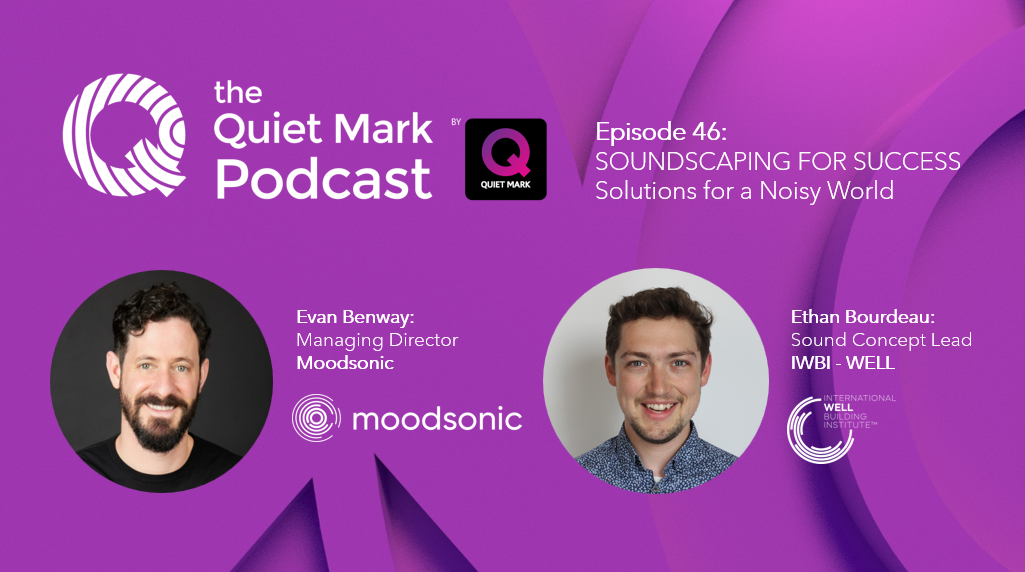


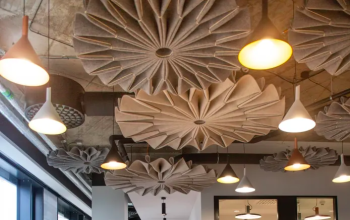
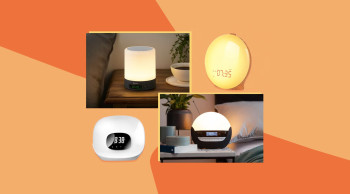


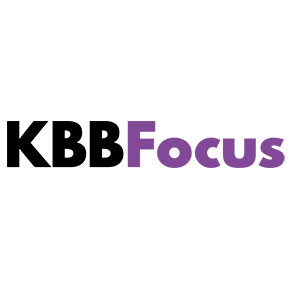





 Quiet Mark Founder
Quiet Mark Founder